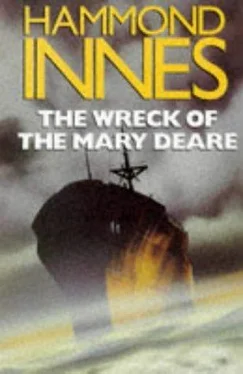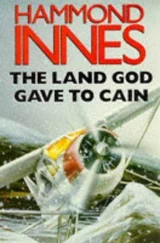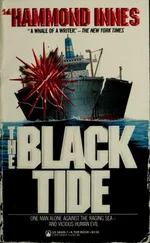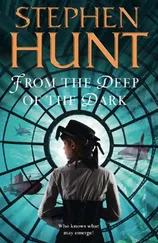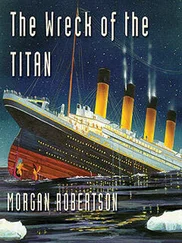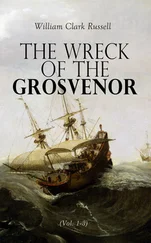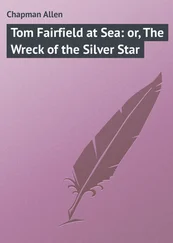Hammond Innes - The Wreck Of The Mary Deare
Здесь есть возможность читать онлайн «Hammond Innes - The Wreck Of The Mary Deare» весь текст электронной книги совершенно бесплатно (целиком полную версию без сокращений). В некоторых случаях можно слушать аудио, скачать через торрент в формате fb2 и присутствует краткое содержание. Жанр: Морские приключения, на английском языке. Описание произведения, (предисловие) а так же отзывы посетителей доступны на портале библиотеки ЛибКат.
- Название:The Wreck Of The Mary Deare
- Автор:
- Жанр:
- Год:неизвестен
- ISBN:нет данных
- Рейтинг книги:3 / 5. Голосов: 1
-
Избранное:Добавить в избранное
- Отзывы:
-
Ваша оценка:
- 60
- 1
- 2
- 3
- 4
- 5
The Wreck Of The Mary Deare: краткое содержание, описание и аннотация
Предлагаем к чтению аннотацию, описание, краткое содержание или предисловие (зависит от того, что написал сам автор книги «The Wreck Of The Mary Deare»). Если вы не нашли необходимую информацию о книге — напишите в комментариях, мы постараемся отыскать её.
The Wreck Of The Mary Deare — читать онлайн бесплатно полную книгу (весь текст) целиком
Ниже представлен текст книги, разбитый по страницам. Система сохранения места последней прочитанной страницы, позволяет с удобством читать онлайн бесплатно книгу «The Wreck Of The Mary Deare», без необходимости каждый раз заново искать на чём Вы остановились. Поставьте закладку, и сможете в любой момент перейти на страницу, на которой закончили чтение.
Интервал:
Закладка:
But why?
A sense of unease held me for a moment — a deserted ship with all its secrets, all its death-in-life stillness — I felt like an intruder and glanced quickly back towards Sea Witch. She was no bigger than a toy now in the leaden immensity of sea and sky, and the wind was beginning to moan through the empty ship — hurry! hurry!
A quick search and then the decision would have to be made. I ran for’ard and swung myself up the ladder to the bridge. The wheelhouse was empty. It’s odd, but it came as a shock to me. Everything was so very normal there; a couple of dirty cups on a ledge, a pipe carefully laid down in an ash-tray, the binoculars set down on the seat of the captain’s chair — and the engine-room telegraph set to Full Ahead. It was as though at any moment the helmsman might return to take his place at the wheel.
But outside there was evidence in plenty of heavy weather. All the port wing of the bridge had been stove in, the ladder buckled and twisted, and down on the well-deck the seas had practically stripped the covering from the for’ard holds and a wire hawser was lying uncoiled in loops like dannert wire. And yet that in itself didn’t account for her being abandoned; another tarpaulin hatch cover had been partly rigged and fresh timbering lay around as though the watch on deck had just knocked off for a cup of tea.
The chartroom at the back of the wheelhouse shed no light on the mystery; in fact, the reverse, for there was the log book open at the last entry: 20.46 hours — Les Heaux Light bearing 114 degrees, approximately 12 miles. Wind south-east — Force 2. Sea moderate. Visibility good. Altered course for the Needles — north 33 degrees east. The date was March 18, and the time showed that this entry had been made just an hour and three-quarters before the Mary Deare had almost run us down. Entries in the log were made every hour so that whatever it was that had made them abandon ship had occurred between nine and ten the previous night, probably just as the mist was closing in.
Checking back through the log I found nothing to suggest that the ship would have to be abandoned. There had been constant gales and they had taken a bad beating. But that was all. Hove-to on account of dangerous seas, waves sometimes breaking against bridge. Making water in No. 1 hold. Pumps not holding their own. That entry for March 16 was the worst. Wind strength was given as Force 11 for twelve solid hours. And before then, ever since they had left the Mediterranean through the Straits, the wind had never fallen below Force 7, which is moderate gale, and was several times recorded as Force 10, whole gale. The pumps had been kept going all the time.
If they had abandoned ship in the gale of March 16 it would have been understandable. But the log showed that they had rounded Ushant on the morning of March 18 in clear weather with seas moderate and the wind Force 3. There was even a note — Pumps making good headway. Clearing wreckage and repairing Number One hatch cover.
It didn’t make sense.
A companion-way led to the upper or boat-deck level. The door to the Captain’s cabin was open. The room was neat and tidy, everything in its place; no sign of hurried departure. From the desk a girl’s face in a big silver frame smiled at me, her fair hair catching the light, and across the bottom of the picture she had scrawled: For Daddy — Bans voyages, and come back soon. Love — Janet. There was coal dust on the frame and more of it on the desk and smudged over a file of papers that proved to be the cargo manifest, showing that the Mary Deare had loaded cotton at Rangoon on January 13 and was bound for Antwerp. On top of a filing tray filled with papers were several air mail letter-cards slit open with a knife. They were English letter-cards postmarked London and they were addressed to Captain James Taggart, SS Mary Deare at Aden, addressed in the same uneven, rather rounded hand that had scrawled across the bottom of the photograph. And below the letters, amongst the mass of papers, I found report sheets written in a small, neat hand and signed James Taggart. But they only covered the voyage from Rangoon to Aden. On the desk beside the tray was a sealed letter addressed to Miss Janet Taggart, University College, Gower Street, London, WC1. It was in a different hand and the envelope was unstamped. All those little things, those little homely details … I don’t know how to express it — they added up to something, something I didn’t like. There was that cabin, so quiet, with all the decisions that had driven the ship throughout her life still there in the atmosphere of it — and the ship herself silent as the grave. And then I saw the raincoats hanging on the door, two blue Merchant Navy officers’ raincoats hanging side by side, the one much bigger than the other.
I went out and slammed the door behind me, as though by closing it I could shut away my sudden, unreasoned fear. ‘Ahoy! Is there anyone on board?’ My voice, high and hoarse, echoed through the vaults of the ship. The wind moaned at me from the deck. Hurry! I must hurry. All I had to do was check the engines now, decide whether we could get her under way.
I stumbled down the dark well of a companion-way, following the beam of my torch, flashing it through the open doorway of the saloon where I had a glimpse of places still laid and chairs pushed hastily back. A faint smell of burning lingered on the musty air. But it didn’t come from the pantry — the fire was out, the stove cold. My torch focused on a half-empty tin of bully lying on the table. There was butter, cheese, a loaf of bread with the crust all covered in coal dust; coal dust on the handle of the knife that had been used to cut it, coal dust on the floor.
‘Is there anybody about?’ I yelled. ‘Ahoy! Anyone there?’ No answer. I went back to the ‘tween-decks alleyway that ran the length of the port-hand midships section. It was as silent and as black as the pit of a mine. I started down it, and then I stopped. There it was again — a sound I had been conscious of, but had not thought about; a sound like the shifting of gravel. It echoed within the ship’s hull as though somewhere the steel plates were shifting on the bottom of the sea. It was a strange, uncanny sound, and it stopped abruptly as I walked on down the alleyway so that, in the vacuum of abrupt silence, I heard the wind’s howl again.
The door at the end of the alleyway swung open to the roll of the ship, letting in a glimmer of daylight. I started towards it, conscious that the acrid smell of burning had increased until it quite overlaid the fusty mixture of hot oil, stale cooking and sea water dampness that permeates the ‘tween-decks of all cargo ships. A fire-hose, fixed to a hydrant near the engine-room door, snaked aft through pools of water and disappeared through the open door, out on to the well-deck beyond. I followed it. Out in the daylight I saw that Number Three hatch was burned and blackened, eaten half away by fire, and Number Four had been partly opened up. Fire hoses curled round the deck, disappearing into the open inspection hatch of Number Three hold. I went a few rungs down the vertical ladder, flashing my torch. But there was no smoke, no lurid glow, and the acrid fumes of fire had a stale, washed-out smell, mixed with the pungent odour of chemicals. An empty foam extinguisher toppled on its side, clattering against the steel of the bulkhead plating. My torch showed the black pit of the hold piled high with charred and sodden bales of cotton and there was the sound of water slopping about.
The fire was out — dead — not even a wisp of smoke. And yet the ship had been abandoned. It didn’t make sense. I was thinking of last night, how the smell of burning had lingered in the mist after the ship had gone past us. And there was the coal dust on the captain’s desk and in the galley. Somebody must have put that fire out. I ran back to the engine-room door, remembering the grating sound of gravel shifting. Could it have been coal? Was there somebody down in the stokehold? Somewhere in the ship a hatch slammed, or maybe it was a door. I went in, on to the catwalk that hung over the black abyss of the engine-room, criss-crossed with the steel of gratings and vertical ladders. ‘Ahoy!’ I yelled. ‘Ahoy there!’
Читать дальшеИнтервал:
Закладка:
Похожие книги на «The Wreck Of The Mary Deare»
Представляем Вашему вниманию похожие книги на «The Wreck Of The Mary Deare» списком для выбора. Мы отобрали схожую по названию и смыслу литературу в надежде предоставить читателям больше вариантов отыскать новые, интересные, ещё непрочитанные произведения.
Обсуждение, отзывы о книге «The Wreck Of The Mary Deare» и просто собственные мнения читателей. Оставьте ваши комментарии, напишите, что Вы думаете о произведении, его смысле или главных героях. Укажите что конкретно понравилось, а что нет, и почему Вы так считаете.
